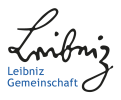Atmospheric and ionospheric layering (MST16-4)
Conveners: Erhan Kudeki (MSO), Gerald Lehmacher, Xinzhao Chu
Both the neutral atmosphere and the ionosphere are fundamentally layered due to the placement of a compressible gas in a gravitational field. Additional stratification is induced by vertically changing temperature gradients and the production of short-lived components via phase changes, chemical reactions, or ionization processes. These layers can be extremely fine, down the limits given by molecular diffusion. They strongly impact the refraction index for radar waves (at meter scales) or exhibit sharp concentration changes resolvable by advanced lidars (also at meter scales). Radars are exceptional at studying ionospheric plasma irregularities, such as in the equatorial electrojet (EEJ), radar aurora, equatorial spread-F (ESF), or 150-km echoes, while metal resonance lidars can follow the dynamics of many long-lived trace species (Na, K, Fe, Ni, Mg, Ca, Ca+), some into the thermosphere. This session invites all contributions concerning atmospheric and ionospheric layering in the mesosphere and thermosphere, for example, NLC, PMSE, sporadic E, metallic layers, neutral layers,meteor ablation layers, and other forms of ionospheric irregularities. Recent experiments involving the use of MST radars and metal lidars are especially encouraged, but all other observational, theoretical, and modeling studies dedicated to stratified structures, including embedded perturbations and instabilities, are invited.












